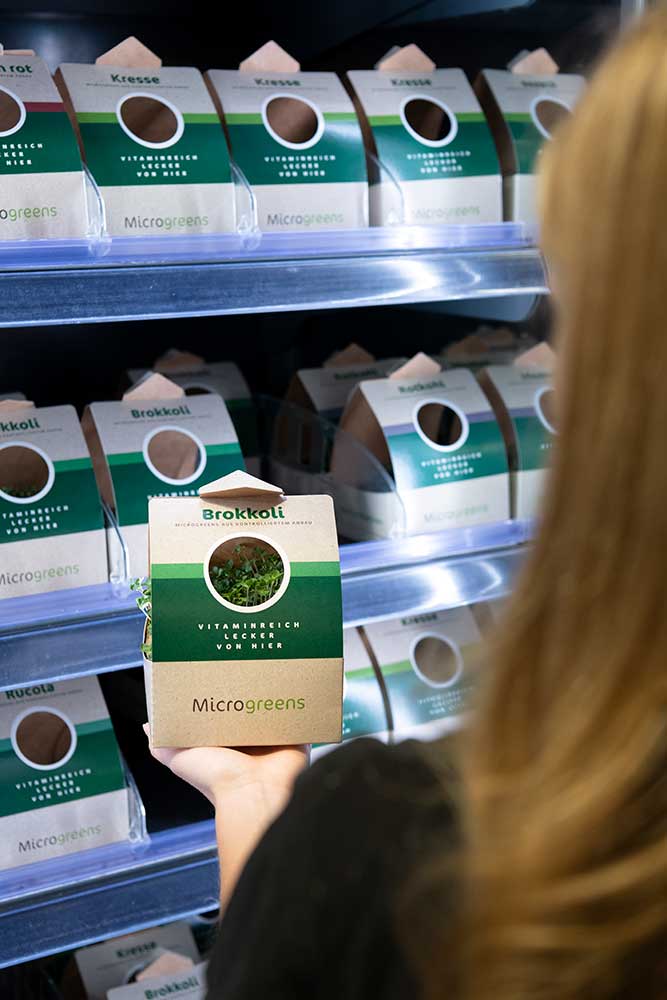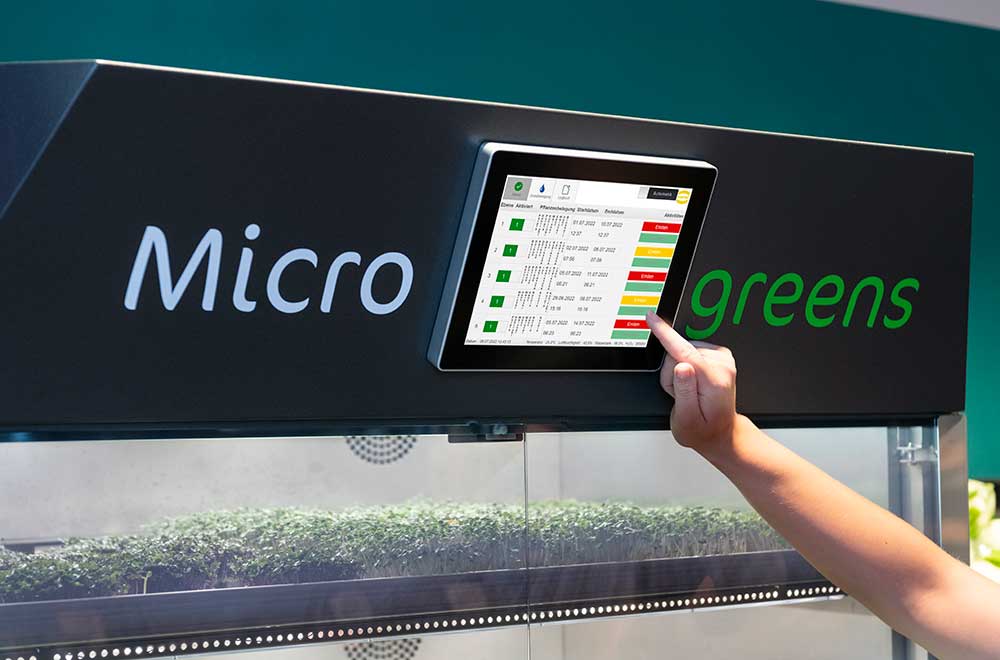GrowUnit: Indoor greenhouse for microgreens
Dr. Sebastian Kipp studied Agricultural Sciences in Bonn before going on to complete his doctorate at the Technical University of Munich. Since 2017, he has been responsible for “Product Development Market Support” at Klasmann-Deilmann, a manufacturer of substrates for commercial horticulture, among other things. Here he works in the fields of research and development, technical customer support, quality management and innovation. tec.news spoke to him about the collaborative work on the indoor greenhouse “GrowUnit”, which is set to be utilised in the food retail and catering industry.
tec.news: How did the cooperation with HARTING come about?
Dr. S. Kipp: Prof. Andreas Ulbrich from the Osnabrück University of Applied Sciences, where he teaches in the Faculty of Agricultural Sciences and Landscaping and deals intensively with Vertical Farming, put HARTING and Klasmann-Deilmann in contact with one another. This paved the way for HARTING Systems to combine its technical expertise with our know-how on the growth and needs of a plant to construct a corresponding, automated indoor greenhouse.
tec.news: What was your specific task here?
Dr. S. Kipp: We developed a culture substrate or nutrient medium on which the plants can grow – i. e. a hemp pad measuring 9 x 9 cm, to which we stick the seeds for the individual microgreens. In addition, we supplied HARTING with the specific requirements to design the automation of the software and operating elements in such a way that all the plant cultivation and technical requirements for optimal independent growth would be fulfilled.
tec.news: How does the GrowUnit differ from other existing concepts in the food industry?
Dr. S. Kipp: The main difference is that we provide an automated greenhouse where the plants are grown on site from seed. Other competitors pursue the business model of stocking the cabinets with larger plants that have already been grown in pots, thereby assuming the role of operators. In our joint business model, the food product market itself is the operator of the device.
Thanks to the design and programming of the GrowUnit, only little maintenance is required. Another difference to similar offerings already on the market is the type of plants. We are not launching a new basil on the market, but rather growing microgreens that are very healthy and bring up to 50 new flavour components to the table – a genuine superfood.
tec.news: Our current issue looks at various types of “Smart Farming”. How do you differentiate yourself here?
Dr. S. Kipp: In principle, the first thing that should be said is that with the GrowUnit you don't need the proverbial “green thumb” to get the plant to yield. Cultivation is based on data and algorithms, while irrigation and lighting are controlled automatically. Although these parameters also play a key role in precision agriculture and autonomous farming, another major difference to the GrowUnit is the area itself. Our indoor greenhouse has five different levels, one on top of the other, and each is filled with different seeds and can be controlled individually. Pesticides are not used.
tec.news: What is next on the agenda for the GrowUnit?
Dr. S. Kipp: Initially, our indoor greenhouse ran in test mode in a supermarket in Dortmund. Since the end of September, we have added other stores and also carried out the first trial runs in the gastronomy sector.
The project name “GrowUnit” stands for an indoor greenhouse for microgreens, which is intended to be placed in the fruit and vegetable section of supermarkets or in the catering business.
Microgreens, which are crop plants in the germination stage, are initially sown in this greenhouse. Seed mats are provided for this, which are then placed in the removable trays of the GrowUnit. The small plants are so-called dark germs, which is why they are covered and thus placed in the dark for the first few days. The operator then selects the variety of plant in the software – and the growth programme begins. After about two days, the cover is removed manually and the microgreens continue to grow in the light. The software of the small greenhouse automatically controls the irrigation, lighting and ventilation to ensure optimal plant growth. Depending on the variety, the microgreens are ready to harvest after about 6 to 12 days. The harvest time of the respective variety is also displayed in the software. Once “Harvest” is pressed, the plants can be removed and the small greenhouse is ready for the next sowing operation. Up to 300 microgreens can be grown at the same time on just 1.1 m2 of floor space. The nutrient-rich crops are intended as a tasty topping for salads, steaks or fish.



